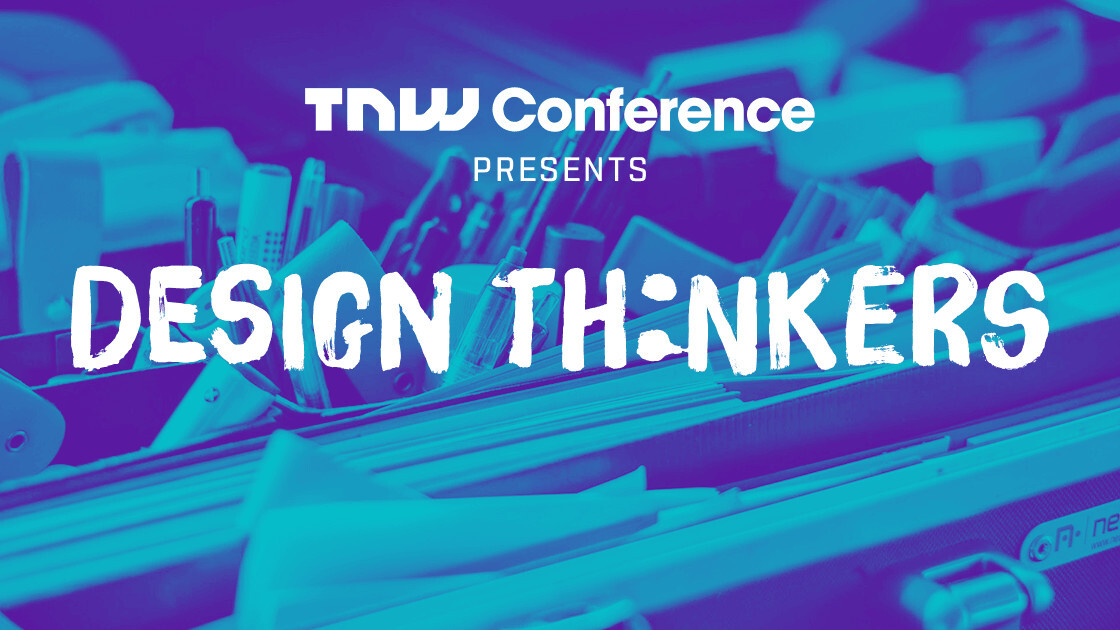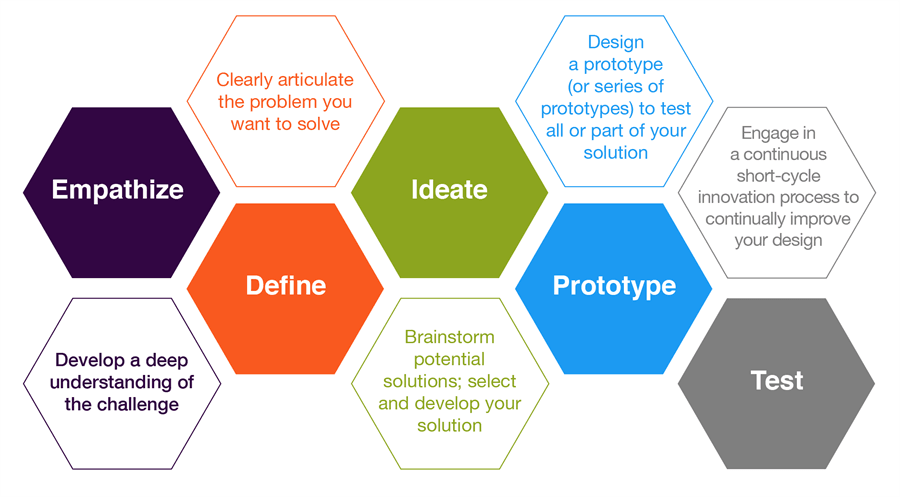
Design thinking has been around for many years, but it seems to me that it’s been poorly misused. Usually employed as a quick PR stunt, companies fail to understand how it can genuinely help create something powerful. In all fairness, that’s easier said than done.
Why, you may ask? Because design thinking sucks.
Before you sharpen the pitchforks, hear me out. Design thinking only sucks because no one has any idea how to use it right. Design thinking sucks as it currently stands. When you take away the PR bullshit, it still has a place in the office.
At TNW Conference in May, the Design Thinkers track will explain how to use it effectively across fields, including space exploration and healthcare environments. To get you started, let’s walk through some new definitions, and outline some ways that companies can still use it to their advantage.
Design thinking 101
Before design thinking is applied to a specific field or industry, there’s a general baseline for describing the concept. At its very core, we could probably define it as ‘considering the user experience for creative problem solving’. Essentially, you think about a product, service, or whatever else, through the perspective of the people who’ll be using it.
Design thinking usually follows a step-by-step process, which seems simple enough. Unfortunately, this fixed structure is usually where things go awry for companies looking to come up with a great idea. We’ll look further into this in a bit — for now, here are the five steps:

To put the theory of design thinking in practice, I spoke to our in-house designer Saïna to see how she defines design thinking:
Design thinking to me is the process of establishing the problem, understanding the goal, and coming up with the solution(s) of reaching that goal in a simple and effective way.
Saïna isn’t following the rulebook — she’s adapted the concept to fit her own needs. This is made clear as she describes her daily work:
As a designer mostly for web, you always want the user to have the best experience visiting a website. That doesn’t necessarily mean it has to look pretty, since aesthetics are subjective. But the user has to understand the ‘natural’ flow of the website, which can be achieved by basing it on natural instincts, existing interfaces, or innovating ways based on research.
This essential concept of the user understanding the ‘natural’ flow of things can be used as a tool by so many companies, to design a product that the user wants to use. In the field of business, companies usually conduct research with people to see what their needs are. These are all concepts that are integral to design, but removes all the rigid structure of design thinking.
So what are the flaws?
While the process may seem pretty straight-forward, designer Natasha Jen very famously deemed it as bullshit. Her issue with it lies in the fact that it follows a “prescribed, step-by-step approach to creative problem solving.”
I would agree with her sentiment. Companies usually get stuck in following the steps so precisely that any sense of creativity gets lost. It doesn’t have to be this rigid structure — trust your own creative process to make it happen. Come up with new ideas that allow for the flow of real design.
Natasha Jen also has a problem with the fact that design thinking can be applied “by anyone and to any problem.” She suggests we rethink our approach — it’s time to redefine design thinking to produce something worth having.
Design thinking seems intangible, and slightly self-obsessed. Most companies come across that way when they slap a ‘design thinking’ label on their press release and call it a day. But the simple concept of designing with the user in mind is a great way to increase your chances of making some money.
If you design a great product that people genuinely want (and use design thinking to increase your chances), then everyone wins. It’s a great way to show that you empathize with your customers, but only if it comes from a genuine place. That means you actually have to put in the work. So here are a few tips on how to move away from traditional design thinking.
Get off your high horse
If you want employees to use innovation in order to drive results, you have to realize that there are literally no rules to the process. Don’t follow that rigid five-step process — you don’t need it to come up with a great idea.
Creativity flourishes in an open environment with no constraints. Encourage everyone to wear fuzzy socks, write on the damn walls, order pizza — whatever best produces a zero-judgement zone. If people feel like they’re being held accountable for every dumb idea, no one’s going to speak up.
It’s also advisable to not have a sense of hierarchy in the room. Let everyone express their thoughts freely.
Remove the revenue
A large problem with design thinking for business is the focus on making money. If you’re trying to create a product that’s best for the consumer, it’s probably going to cost a bit more, include a few billable overtimes, and cause a few more headaches. Don’t limit your team with a budget — no one wants to think about that in a brainstorm session.
Everyone’s well aware that there are limits to feasibility, but that should be something to worry about after the great idea has been formed. A product that people genuinely want is going to ultimately bring in the money.
Provide evidence
Natasha Jen explains in her talk that real designers show ‘evidence’ of their work. She condemns the typical post-it format of design thinking because it’s not tangible. Show your thought process, your inspirations, your failed prototypes — it all helps to reach your goals. Don’t feel as though it has to take on a familiar shape. Mood boards are great, but if you decide that it’s not the way to go, figure something else out.
Evidence is also important for the critiquing process. If you can’t see every step of the journey, how can you accurately see its downfalls? And make sure to do this often. Stepping back from your ‘great idea’ and viewing it from the perspective of the consumer is vital. Bombard your concept with scepticism — play devil’s advocate to find the downfalls. Only then can you solve them.
Get an expert opinion
So, in summation, here are a few things you can do to use design thinking to your advantage:
- Don’t follow the five-step process
- Don’t focus on money until later
- Show evidence
- Throw out your post-its
- Critique everything
- Order lots of pizza
These are just a few ideas to help redefine the design thinking process. If you’re still struggling to figure out how it can be applied to your problem, it’s always best to get an expert opinion. The Design Thinkers track at TNW Conference will help you figure out how it can be applied to any field, and our cool line-up of speakers will share their tips with you. Get inspired so you can pull off a real design thinking success story.
Get the TNW newsletter
Get the most important tech news in your inbox each week.





